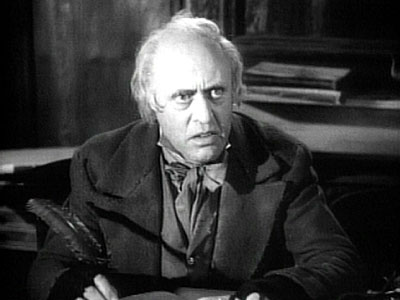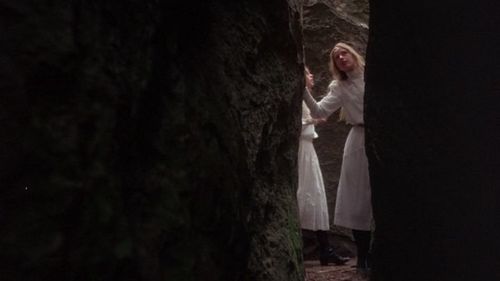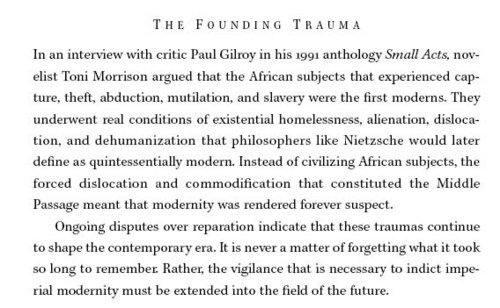December 31, 2006
2006 rewind
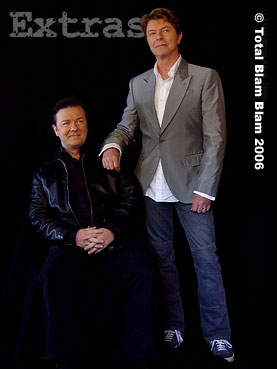 | 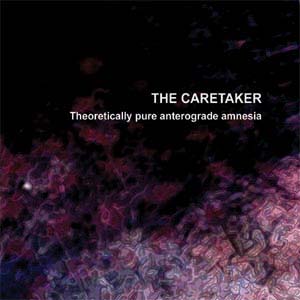 |
Momus argues that 'if music didn't exactly die in 2006, it certainly felt sidelined, jilted, demoted, decentred, dethroned as the exemplary creative activity, the most vibrant subculture.' That is one reason why Burial has to be the album of 2006, and hauntology the year's dominant theme.
Burial was a flashback to collective dreams - to dreams of collectivity - in the age of MySpace. The most significant changes this year were not in pop's content - whose rate of change continues to sclerotically slow - but in its distribution. Momus is right that in 2006 MySpace and YouTube eclipsed Old Media as pop's most important means of distribution. However, both remain parasitic upon Old Media (as the Sandi Thom scam demonstrates, stories about web activity have been more important than any actual web-based success) and there is no evidence yet that the net can generate pop events of its own. In part that is because Old Media - broadcast - time was simultaneous, punctual; New Media time is distributed, fragmented: the MyTime of consumer preference.
The OedIpod has displaced Pop (as) Spectacle. Two examples from Momus - Bowie's appearance on 'Extras' and the end of Top of the Pops - reinforce the impression that celebreality has subsumed pop. To this, I would add Chantelle winning Celebrity Big Brother. In each case, we see the triumph of the celebreality principle over fantasy, glamour and alterity. From playing the alien on TOTP to playing a banal yet unbelievable version of himself in 'Extras', Bowie's trajectory is emblematic. The second series of 'Extras', in fact, with its unthreatening, matey star cameos, its one-dimensional characters as unconvincing and stereotyped as those in the embedded sitcom it mocked, was horribly symptomatic of everything bad about popular culture in 2006.
Pop has achieved ubiquity at the cost of losing vibrancy and exclusivity. In the most significant modes of communication in late capitalism, pop has become a kind of semiotic glue, functioning exactly in the way that Chion argues that sound operates in film, producing a 'consistency-effect', an illusion of coherence. Advertising has so synergetically merged with pop that it is scarcely possible to imagine what it would be like without it.
In any case, I've posted below my top 10 LPs and singles of the year. There are no surprises, and since there seems little point repeating what I've already said, I've only commented on those releases about which I haven't previously written. After Burial, the order is somewhat arbitrary and mood-dependent.
Before the list proper, two albums that are unplaceable - or which I, at least, could not place - are The Caretaker's Theoretically pure anterograde amnesia and Scott Walker's The Drift. Like Simon and Momus, I found myself admiring The Drift without loving it. The obstacle here isn't its abstraction or its bleakness so much as Walker's voice, which I found unwieldy and stilted.
No less abstract or bleak, but far more subtly seductive, The Caretaker's album is in many ways the most important of the year; an intervention that was as much theoretical as sonic. In an excellent review for Grooves magazine, Alan Harrison claims that 'the only comparisons within reach are maybe the horrifying 1960s symphonies of Krzysztof Penderecki, or the sepulchral doom of Bohren Und Der Club Of Gore.' Theoretically pure anterograde amnesia is like being unplugged from the Matrix and finding oneself in a forbidding and inexplicable present. In the best possible way, the 6 CD set is no longer music; it is an atmosphere-generation kit, and perhaps there is a future for pop in this parasonic, spectral space...
LPs
1. Burial - Burial
2. So This is Goodbye – Junior Boys
Little to add to what I've previously written on these, but here's what I said in the Fact end of year round-up.
3. White Bread, Black Beer – Scritti Politti
4. Stone Cold Ohio – Little Axe
5. Fundamental - Pet Shop Boys
At times as cavernously after-the-rave melancholic as Burial, the massively underrated, Fundamental may well be not only the PSBs' best LP, but Trevor Horn's too. Fundamental has all the affective nuance that Horn's previous productions - which at their best were magnificent follies - dispensed with.
6. A Girl Like Me - Rihanna
No-one but me rates this, but it is a fine, bittersweet summer LP, full of hook-heavy pop songs (including two of the year's best singles).
7. Memories of the Future - Kode9 and Spaceape
8. Tiny Colour Movies – John Foxx
9. Dead Air – Mordant Music
Look out for my interview with Mordant Music, appearing very soon.
10. The Owl’s Map - Belbury Poly
Singles
1. SOS - Rihanna
2. Boom Boom Bap – Scritti Politti
3. Ain’t No Other Man – Christina Aguilera
4. Me & U - Cassie
A backing track like Sylvian/ Sakamoto spliced with computer error alerts, and a vocal whose catatonic flatness was a refreshing contrast to R and B's default vocal acrobatics.
5. Unfaithful - Rihanna
6. SexyBack – Justin Timberlake
Just as I had finally given up on Timbaland, he returns from the grave with the Timberlake and Furtado albums, although there was nothing on FutureSex/LoveSounds which matched the unconsummated, gibbering tension of 'SexyBack'.
7. Can’t Wait – Johnny Dark
8. Maneater – Nellie Furtado
9. London Bridge - Fergie
Fabulously sleazy, almost atones for her part in 'Where is the Love?'
10. Say I – Christina Milian
In a just world, Milian would have achieved the full spectrum dominance Beyonce enjoys. Based around a dreamy Miracles' string sample, 'Say I' effortlessly outdoes any of Ms Knowles' solo efforts, yet Beyonce is all-conquering while Milian was dropped by her record company.
Re-releases/ re-packages
Learning to Cope with Cowardice - Mark Stewart and the Maffia / Tack>>Head Soundcrash - Tack>>Head
Ike Yard 1980-82 Collected - dyschronic in a then-futuristic sense, Ike Yard sound out-of-time, like the pre-Laddish New Order stunned into an even deeper catatonia, like an unsuspected cross between Metamatic at its most impersonal and ACR's funk at its most sombre, like a terse and tense distillation of EBM's best moments before they even happened.
Live
Scritti Politti - I stressed the uncanniness of Green's voice in my pieces on White Bread, Black Beer, and that sense of uncanniness is doubled in the live context. The discrepancy between the synthetic honey of Green's voice - so eerie, ethereal and discorporated - and an actual physical body is an odd experience indeed, perfectly making Mladen Dolar's point that no voice can ever be definitively 'traced back' to a body.
_________________________________________________________
Not pop... but my disappointment of the year was Dr Who. The misgivings I had managed to surpress in the first series became too powerful to overlook, so that by the end of the second series, I was no longer watching. I did tune into the Christmas special, but it confirmed all my prejudices. A plot that was a re-run of last year's Christmas episode, the yowling Catherine Tate, Tennant all lachrymose, the appalling music which seems to be getting louder by the episode - it was all very po-mo perfunctory. Whereas the old Dr Who would plunder classical sources and pulp them, the new Dr Who takes the middlebrow route of pursuing 'psychological depth'. The single biggest indictment of the new Dr Who, though, is its lack of any memorable monsters. In two series, there is not one monster that even remotely ranks with the cybermen or the daleks... I'm glad that Dr Who is on TV, but, really, it could easily be so much better...
Next: The Fall post, part 2.... really...
December 24, 2006
December 22, 2006
Nothing happens
Sometimes a disappearance can be more haunting than an apparition.
Nowhere is this clearer than in Picnic at Hanging Rock, which I watched again for the first time in a while last week. Picnic at Hanging Rock is the exemplary study of disapparition in cinema - I know of no other major film which deals with unexplained disappearance.
One of the fascinating aspects of Picnic at Hanging Rock is the way in which it generates 'reality-effects'. Although Joan Lindsay's novel was entirely fictionalised, it was widely , though mistakenly, believed to be based on a true story. Why did this happen?
The film's trick involved re-telling the classic Fairy story - young women abducted into an Other world - using the conventions of realism. One of these conventions was giving the events - or non-events - a precise date. An opening caption tells us that the three women disappeared on February 14th, 1900. 1900, significantly, is the year which Freud wanted The Interpretation of Dreams dated (this dating is, famously, fictional: Freud's text was actually published in 1899, but he wanted it to bear a more epochal date). But Picnic at Hanging Rock is not set in our 1900, for February 14th fell on a Wednesday, not a Saturday. Nevertheless, the use of a date (albeit a wrong date) would have been sufficient in itself to induce a 'reality-effect'.
Above all else, though, the illusion of reality is produced by the lack of any solution to the mystery the film presents: what happened to the missing girls? As is well known, in her original manuscript, Joan Lindsay provided a solution of sorts to the enigma, in a concluding chapter that her publishers encouraged her to excise from the published version of the novel. (This 'Chapter Eighteen' was published separately, as The Secret of Hanging Rock.)
The effect that this excision produced can be linked to the lesson Lacan draws from the story about the painters Zeuxis and Parrhasios. Zeuxius painted a bunch of grapes so convincing that birds attempted to eat them. Parrhasios, meanwhile, painted a curtain, which Zeuxius asked him to pull aside to reveal what he had painted. The removal of the last - explanatory - chapter transformed Picnic at Hanging Rock into the fictional analogue of Parhassios' painting. It became a veil, an enigma whose very irresolution produced the illusion that there must be something behind the curtain of fictionality. A realist fiction becomes a fiction that screens the Real; i.e. which reveals the Real as an absence, as something that can only be encountered indirectly, via intermediaries. The central event in Hanging Rock is this 'Nothing' irrupting into the consensual hallucination of everyday empirical reality, leaving only a gap, a puncture wound: Nothing happens.

In passing, it's worth remarking that the film strikingly brings out the inherent Surrealism of the colonial project. The boarding school looks like some Magritte excrescence. The elegantly stifling absurdity of the clothes, architecture and rituals, imported into a landscape whose very scale - temporal as well as spatial - mocks them, appear not only geographically, but ontologically out of place, an invasion from another world.
Hanging Rock broods like one of Dominquez or Ernst's decalcomania spinal landscapes; the incursion of an unassimilable Deep Time, a time that preceded the arrival of human beings by many millennia ('Waiting a million years, just for us'). Stefan Gullatz persuasively argues that Hanging Rock stands in for 'Das Ding', the Freudian Thing, that which resists all attempts at symbolization.
-
As the object elevated to the site of Das Ding does not exist 'in its own time', but only materializes a void of non-meaning, an approach to this object in a realistic time frame would ultimately reveal its nothingness. A very slow or precipitous approach, however, facilitates the perception that the object has been missed, and therefore possesses an objective, empirical existence.
The rock is spatially as well as temporally anomalous. It can only be seen in fragments, its labyrinthine spaces as intensively treacherous as those of another alien picnic site, Tarkovsky's Zone. The rock is effectively navigable only by the attaining of a delirium state: like Ballard's The Drowned World - another glimpse into Deep Time - the film is a study in solar trance. With time (and narrative) held in an aching, lanquid suspension, a kind of oneiric fatalism holds sway....
Miranda (in a near-paraphrase of Poe): What we see and what we seem are but a dream, a dream within a dream.
Marion: A surprising number of human beings are without purpose, though it is probable that they are performing some function unknown to themselves.
Miranda: Everything begins and ends at the exactly right time and place.
December 21, 2006
The vibrations will live on...
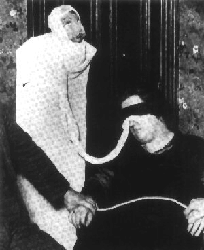
George Lochinski writes:
- Your last post mentions Helen Duncan, and wouldn't you know it, Helen Duncan is also mentioned in The Fall's "Psykick Dancehall No. 2" in a spoken word smample of (probably) MES himself saying:
Helen Duncan was accused of being a fraudulent medium
They burst into a seance over a over in Portsmouth,
over a chemists shop
A length of ectoplasm or a suit of cheesecloth
Was grabbed but it got away
The Witchcraft Act 1735 was used to give her 9 month's
jail
The vibrations will live on
Of course! I'd entirely forgotten this...
George continues:
- Which reminds me...you still have not delivered on the second Fall piece you have promised!
This is true, and George is not the first to remind me about this. There's no question of my forgetting it, and I really will make all efforts to complete the post by the end of 06 (although I fear that, expectations about the post are by now so high, that it can never meet them...)
________________________________________________________________
Owen's program for a hauntological Pop - 'The Caretaker producing Anne Shelton, or Fennesz collaborating with Hutch' - is highly appetising, although I see no reason why the putative group should be limited to covers. The tantalising aspect of Christina's Back to Basics was that it almost promised to deliver something like this; if only Premier's trademark needle-to-the-groove hiss were even more foregrounded, if only the gloss were mottled into mustiness.
________________________________________________________________
Tremendous piece on No Fear of the Future (via Ballardian) on 'The Assassination Inquest of Diana, Princess of Wales Considered as an Unintentionally Ballardian Remix of the Warren Commission Report'.
December 14, 2006
Hauntology in Dublin
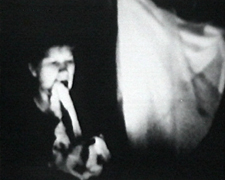 |  |
To Dublin, then, where last week the National College of Art and Design held a one-day symposium on hauntology.
Highlights for me included Susan MacWilliam, who talked about a series of films and installations devoted to seances, telepathy and mediumship. Her piece, 'The Last Person', about Helen Duncan, the last person to be tried under the British witchcraft act, was impressively disgusting in its rendering of the phagic physicality of ectoplasm-channeling.
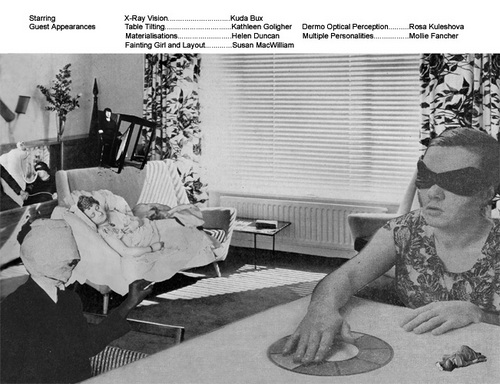
Brian Dillon, who amongst many other things is the UK editor of the excellent Cabinet magazine, spoke about a series of spaces to which he is compelled to keep returning, either actually or virtually: Dungeness, Herne Bay, Estonia. Brian's fixation on these 'old haunts' was brokered by artists: Tacita Dean, who famously filmed the sound mirrors at Dungeness (to which Kode 9 and I made a pilgrimage a couple of years ago), and Jeremy Millar, who, after learning from Dean that Marcel Duchamp had visited Herne Bay while working on the Large Glass, made a film speculating on what the - inherently Dadaist - encounter between the young artist and the decaying Kent seaside town might have involved. (See Millar's own account of the film here...)
Millar also visited Estonia, searching for the locations out of which Tarkovksy conjured the Zone in Stalker. Millar's quest, inevitably, was met with some frustration, since much of the Zone was constructed on a set in Moscow. Afterwards, Brian and I talk about how Stalker was haunted by absences: the form the film currently takes was the result of the first print of the film decaying; a wholly different version - using the special effects so conspicuously lacking in the version that was released - had originally been shot. In addition, Tarkovsky had always to second guess the cuts that the censor would make. Tarkovsky made his films anticipating that they would be cut, but he could never be sure which sections would be lost.
Dungeness, which resembles the Suffolk coast near where I live now, is already reminiscent of the Zone: the rotting huts and shacks, the WWII relics, the brooding power station (as used in the Dr Who story The Claws of Axos in 1971 - and I note in passing that one of the things that is missing from the new Dr Who is any exploration of this kind of scurf space), the strange Picabia-like machines left on the beach like detritus abandoned by a departed civilization whose intentions are now opaque to us ...
For the citizens of industrialized societies, there is a certain universality of the Zone. Most of us will have been captivated at some time by spaces dominated by derelict factories, burned-out vehicles and military/industrial technology wreathed in resurgent greenery. Such spaces strike a deeply resonant chord with the industrialized unconscious; indeed, they might be an image of that unconscious itself.
In any case, Brian's presentation made me reflect that there is a room for a kind of hauntological travel writing; or that the best kind of travel writing is already hauntological, already a study of the power of place as a recording system (cf Lethbridge, or Kneale's The Stone Tape). It also made me think, again, about the relationship of hauntology to place (one of the meanings of 'haunt' being 'a place', of course); and fantasise, again, about hauntological events which would take place in derelict or semi-derelict spaces.
 |  |
I concentrated on sound, talking, as you would expect, about Burial, Little Axe, Ghost Box, Mordant Music and the Caretaker. My claim was that, in hauntology, there is the possibility of a positive alternative to postmodernity. Against the disavowed revivalism of postmodernity's 'nostalgia mode', there are the spectres of lost futures. The 'spectre that haunted Europe' was not, after all, a returning revenant, but the avatar of the new, which could only be declared to never have arrived when Communism's malevolent doppelganger, Stalinism, disintegrated at the end of the eighties.
A decade ago, it was possible to line up rave, jungle, techno and hip hop as alternatives to postmodernity and its discourses. Then, the language of recombination, rather than of spectrality, seemed most appropriate to deal with sampling. But now hauntology is revealed as belonging to the same moebian band as cyberpunk, and both can be opposed to the - linear, progressive - future that SF Capital projected. As Kodwo observes in 'Further Considerations on Afrofuturism':
The 'founding trauma' of the Black Atlantic involved the shattering of linear time: Apocalypse now (and forever). X marks the spot where identity was permanently erased; what is left is the absence, the memory loss, that is constitutive of Black Atlantean subjectivity as such. (Butler's Kindred remains one of the most powerful explorations of the bind whereby, for the modern Black Atlantean, wishing away slavery means wishing away oneself.)
The ghost embodies dyschronia (it is the apparition of his father's spectre, of course, which causes Hamlet to declare that the 'time is out of joint'), even as it calls for revenge, reparation, for things to be set right (and for its raison d'etre to disappear). Yet hauntology must be about the enjoyment of dyschronia, about the unwillingness to set time back into joint. Ten years ago, the most apt image of dyschronia - in either its traumatic or its ecstatic modes, and these are not always extricable - would have been the future invading the past. Perhaps now, though, dyschronia is most strikingly encountered in the persistent traces of that which has never arrived, but which will never go away.
I ended with a discussion of The Caretaker, whom I still believe offers the most acute diagnosis of postmodernity as pathology. In lighting upon 'theoretically pure anterograde amnesia' as the name for our cultural condition, The Caretaker makes us realise that our problem is the inability to make new memories. Who would have suspected that nostalgia and amnesia were twinned in this way? But what is the nostalgia mode if not an amnesia of the present (and future)? (Amnesia of the present, naturally, is the complement to hauntology's nostalgia for the future.)
We are the ghosts, now, in the Caretaker's haunted ballroom; the melodic traces of familiar tunes are the fragments of the past to which we cleave in a hostile, abstract present that is unintelligible, unmappable. At this point, we must mention V VM's other 2006 mega-project of mourning, The Death of Rave (available for download here): rave as revenant, reduced to reverberations. The Death of Rave can be heard as a supplement to the Burial album; another seance of the underground, another burned-out synaptic journey into rave's lost Eternal Now, another delving the dank dilapidation of its deserted spaces... The temporality of The Death of Rave is that of the flashback, the irrruption of a lost future (from the near-past) into the present...
___________________________________________________________________
Dungeness features - amongst several other Zone analogues - on the tremendous Nothing to see here site (as recently linked to by Owen.
Speaking of space, architecture and related matters, I've been meaning for some time to link to another brilliant interview at Ballardian, this time with Geoff Manaugh of BLDNGBLOG. It may surprise people that I agree with Geoff about Crash, which I found difficult to read and incredibly obvious after the far superior Atrocity Exhibition. I also agree that 'I’d like to see Steven Spielberg direct The Drowned World — as long as he didn’t add any kids to the screenplay'. Surely, now is the time for an adaptation of The Drowned World; but this must be set in London. Whatever the merits of the adaptations of Crash, The Atrocity Exhibition and the upcoming High Rise, I've been disappointed that none were set in London. (Basic Instinct 2 is the best version yet of a Ballardian London.)
Hauntology call for papers
Public Domain, Inc. is pleased to announce the call for PERFORATIONS 29.
Guest editor for this issue will be Dr. Thomas Mical, Carleton University
School of Architecture.
As usual with perforations, deadlines are somewhat fluid but please notify
Thomas Mical or Robert Cheatham of your intent by February 15 2007 in order
to be included in the release notification.
Article length is at your discretion. Experimental hypertexts are especially
welcome. Other forms of media, video, etc., may have length restrictions,
please cc media editor Chea Prince or technical editor, Jim Demmers.
If you have any questions please query one of the editors.
-------------------------------------
Guest Editor:
Dr. Thomas Mical
thomas_mical@carleton.ca
Senior Editor:
Robert Cheatham
zeug@pd.org
Technical Editor
Jim Demmers
Jdemmers@pd.org
Media Editor:
Chea Prince
Chea@pd.org
Hauntologies, or Spectral Space
Call for Submissions
This issue of Perforations asks for informed speculations in art,
literature, architecture, and aesthetics concerning the ethereal others
which are never quite present or absent : including uncanny presences
outside the frame of representation, anamorphic blurs of concepts or images;
leaking, stained, or spectral spaces, disappearing figures or soluble
identities; of all that sometimes works like miasmas, pneumas, and vapors;
and all possible manifestations of specters (real or imaginary). This
includes speculative revenants of repetitions of all sort including
catastrophic trauma (the spectral delays/deferrals of Freudian
'nachtraglichkeit') as well as any embeddings of notions of 'eternal
return,' as having hauntological portent for communities and thought to
come.
In its entirety, the issue seeks to selectively map an ephemeral cartography
(a haunto-topography) of the range of barely discernible ghosts, these
"ontological specks" or "pathological kernels", that traverse the
instrumental Cartesian worldview of "clear and distinct" entities. Authors
are asked to chase and capture the multiple potential meanings and effects
of their favorite ontological spectre.
-----------------------------------------
Formed in 1991 to examine issues of theory, art, culture and community in a
saturated age of technical media, Perforations is perhaps the longest
continuously running journal on-line.
The call for perforations 30, HUT TECH, will be released soon.
Perforations raison d'tre here:
http://www.pd.org/~chea/Perforations/perf1/perf-intro.html
Perforations index page:
http://www.pd.org/~chea/HTML/perforations-index.html
podcasts, videos, and other projects here:
http://www.pd.org
December 13, 2006
Kongratulations, Doktor...
.. to I.T., who yesterday successfully completed her PhD viva examination...
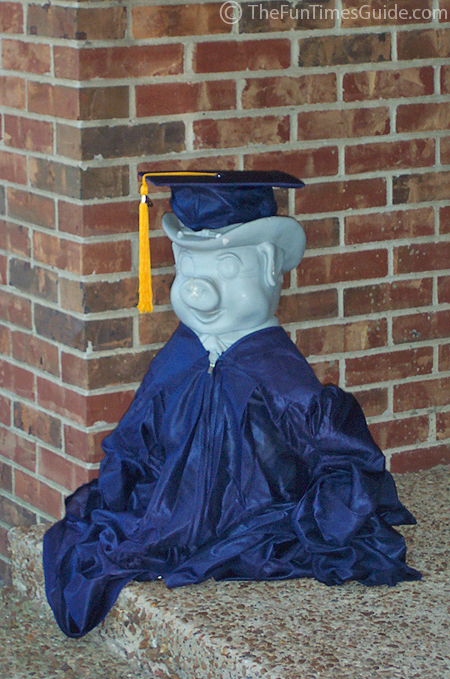
December 09, 2006
k-punk and I
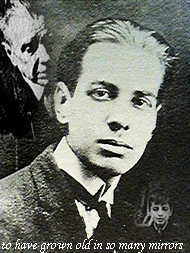
Does A. C. Grayling really not see the difference between being anonymous and using a synonym?
The somewhat attenuated discussion of anonymity and attribution over in Voyou's comments box feeds into a series of recent posts: Sinthome's reflections on (his) name and naming, and a cluster of related posts by Steve, Jodi ,Kim and Dejan. A theme here is blogging's tendency to summon a strange double, a second self that seems both alien yet which cannot entirely be disavowed.
It doesn't strike me that, in this respect, blogging is different from any other type of published writing. As Borges established in his masterly micro-vignette on the irreducibly gothic character of writing, 'Borges and I', even if one writes in one's own name, writing itself produces a semblable, a doppelganger which both is and is not oneself. (This is quite different from what Steve describes: the deliberate assumption of a wholly invented persona in MOOs, etc.)
Perhaps writing - or more specifically, writing about oneself - only reveals the inherently split nature of the subject: the 'the other one, the one called Borges ... the one things happen to' in 'Borges and I' is the subject of the statement, the Borges who observes that 'I do not know which of us has written this page' is the subject of the enunciation. Any use of the pronoun 'I' will always exposes this split, this spaltung.
I make no special effort to conceal my surname online; the reason I do not use it is more because I dislike, even loathe it, than because I want to keep it a secret. I loathe my name because it is mine and also because it is not mine; it is at once too intimate and seems to have no connection with me. Perhaps because the name is quite common, it never seems to fit me, or fit me alone. Nevertheless, when I see the name, I always feel a peculiar sense of shame.
(I'm reminded here of the Tom Ripley of The Talented Mr Ripley. If 'Tom hated being Tom', it's in part because he has to use his own name again. Yet one of the surprises of the later Ripley novels is that Tom does not end up using another name, even it would be a straightforward task for a master forger and mimic like him to permanently assume someone else's identity. Tom makes a name for himself; but more significantly, he makes a - new, sophisticated, stylish, charming - self for his name.)
The pseudonym facilitates the escape from biography. I never chose the name 'Mark k-punk'; I started being called it for obvious reasons (the name of the site, plus the fact that I post here only under the name 'Mark'), but I embrace it and now use it because it seems more like my True Name than the name on my birth certificate ever will. It suggests a performance, but not one that is false. Someone wrote to me recently saying that they had seen a film and immediately asked themselves 'what would k-punk think?' Of course, I ask myself such questions.
That is because a subject is always a subject for someone or something else. One of the best aspects of Zizek's lectures in the summer at Birkbeck was his discussion of the irreducibility of prosopopeia: that there is never a subject in or for itself, that all modes of subjectivity, no matter how ostensibly interior they are, involve a minimal performance for an Other, even if that other is only ever virtual.
It's not that there aren't problems with anonymity, or pseudonomy. The troll's use of the pseudonym, for instance, is often a way of escaping accountability or responsibility. The issue is consistency, and the troll's refusal to be identified with a set of positions which themselves could be interrogated (this is unlikely to be the case with a blogger using a pseudonym); what irks about trolls is their implicit claim to be 'speaking from nowhere', i.e. from the position of commonsense, or on behalf of others. (I.T.'s recent troll exemplified both these tendencies perfectly.) Theirs is performance of and for the big Other; witness the fact that abuse in comments boxes is far more common than abusive email, where there is no audience to observe the performance of disdain.
Incidentally, I.T.'s recent difficulties makes clear the dangers of not being anonymous - ironically because, officially, as it were, she posts anonymously. You really do have to wonder about the level of a mind which would report a blogger to their employer, don't you?
December 04, 2006
I, the Object
Blah-feme now has a little report about the Newcastle event. In response, I humbly present the last section of my presentation, which was entitled, 'The Object Speaks: Grace Jones'.
In More Brilliant than the Sun, Kodwo Eshun situates Jones’ version of ‘She’s Lost Control’ as part of a tripartite moment, beginning with the death of HAL in 2001, and continuing into the Chicago House of Sleezy D’s ‘Lost Control’.
- The womanmachine Grace Jones' 82 remodel of Joy Division's 79 She's Lost Control updates the '50s mechanical bride. For the latter losing control meant electric epilepsy, voice drained dry by feedback. For Jones, the female model that's losing control induces the sense of automation running down, the human seizing up into a machine rictus. The model - as girl, as car, as synthesizer - incarnates the assembly time of generations, obsolescence, 3-year lifespans.(095)
Seizing up, indeed. To lose control here is not to attain the hyper-vital contingency of the aleatory or the ludic, but to be seized, to find one’s will interrupted and disrupted by the interposition of an Other agent; and to seize up, to feel one’s limbs becoming arthritized by the irruption of the mechanical.
In Joy Division’s original, Ian Curtis abjects his own dis-ease, the ‘holy sickness’ of epilepsy, onto a female Other. We may remember that Freud includes epileptic fits – along, incidentally, with a body in the grip of sexual passion – as examples of the uncanny. Here the organic is slaved to the mechanical rhythms of the inorganic; the inanimate calls the tune.

In Joy Division’s version, ‘She’s Lost Control’ is one of rock’s most explicit encounters with death drive: it confronts the ‘edge of no escape’, petil mals as petit morts, Poe-like cataleptic black holes in subjectivity, intermittent interruptions of the user-illusion of identity - She’s Lost Control – flatline voyages into the land of the dead and back, like Artaud miserably waking from the white-hot torture-bliss of electro-convulsive therapy, repetition-compulsion - She’s Lost Control Again - Joy Division’s icy-spined undeath disco sounds like it has been recorded inside the damaged synaptic pathways of a brain of someone undergoing a seizure, Curtis’ sepulchural, anhedonic vocals sent back to him – as if they were the voice of an Other, or Others - in long, leering expressionistic echoes that linger like acrid acid fog.
Jones’ version transposes the song into the Black Atlantic dub of which Martin Hannet’s production was in any case a sombre Manchester doppelganger. Perhaps it is in dub that we come as close as possible to encountering the voice as object; for in dub the voice is estranged both from the body and from signification, even as it can be heard as what they have in common.
In her version, Jones’ voice is wreathed in echoes – of itself, of course; set adrift in a malevolent haze of eerily circulating vocal fragments, figments and FX. Is it an accident that amidst this vocal detritus are two of the limit-cases of the linguistic referred to by Mladen Dolar: the scream and the laugh? In the pre-linguistic scream and the post-linguistic laugh, the liminality of the language erupts in audible signs of the loss of control. ‘Laughter … often bursts out uncontrollably, against the will and intention of the hapless subject; it seizes him or her with an unstoppable force as a series of cramps and convulsions which irrepressibly shake the body and elicit inchoate cries which cannot be consciously contained.’ (29)
Where Curtis sounds already-dead, fatalistically mortified, capable of neither screaming nor laughing, Jones sounds crazed, deranged, in some state that, neither agonized nor ecstatic, is some sublime bitches’ brew of the two; jouissance, precisely. The screams and the laughter seem to come from some Other place, a dread zone from which Jones has returned, but only partially. Is it the laughter of one who has passed through death or the scream of a machine that is coming to life?
Jones changes the words, repudiates Curtis’ disavowal.
‘I’ve lost control’, she sings, repeating her impossible identification again, paradoxically asserting her subjectivity at the very moment of its erasure.
I’ve lost control
I have become the object.
I, the object.
